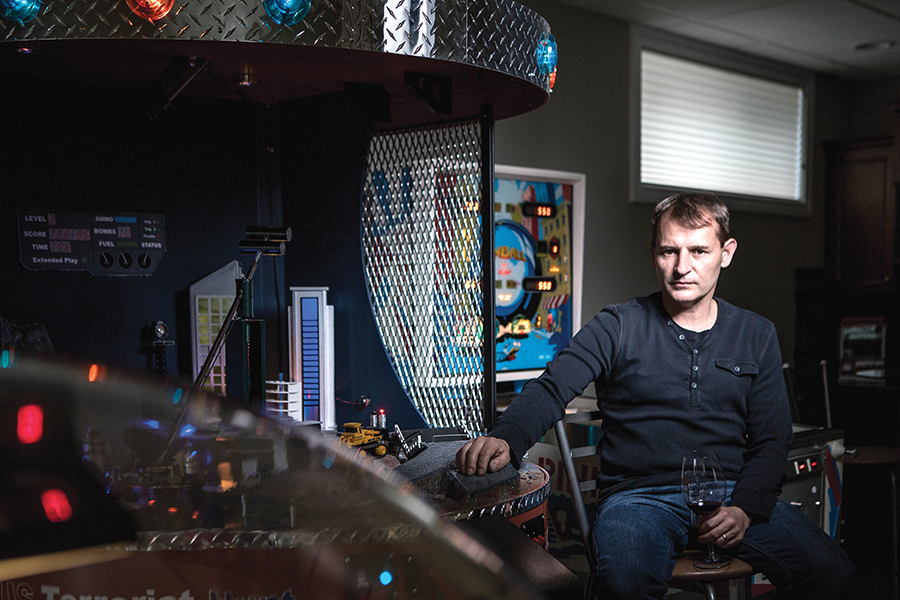So Pepin set to work. He drew upon cabinet refinishing skills gleaned through his former hobby of restoring antique radios encased in elaborate cabinetry. “I founded the Canadian Vintage Radio Society, and through that, I learned about refinishing – I was taught by an expert antique piano restoration company.”
The cellar cabinetry and racking is all custom-built. He incorporated parts from the extra kitchen cabinets into the design and constructed additional racks from birch and maple, which he stained the colour of cherry wood to match. Pepin was careful to include several racking types for maximum flexibility in storage: Some cabinets are slotted to hold individual wine bottles, and you’ll find the couple’s top-shelf vintage wines stored here on, well, the top shelves. There are diamond-shaped cubbies that hold up to 10 bottles each; and floor-to-ceiling, open-box style cabinetry was made especially for cases of limoncello and Prosecco.
Pepin explains that when you build a house, the builder comes back periodically to see if there are issues that need resolving. So on one of these visits, Pepin showed him the little room that seemed destined for simple cold storage. “When the builder saw what I’d done, he said that I’d built more than $10,000 of racking and wine storage because that’s what they would have charged. He said it looked as though they had done it.”
Other features include undermounted cabinet lighting and ceiling halogens, attached to a dimmer box stored in the ceiling, to enhance the ambience of the room and bring out the richness of the wood. Pepin also installed the concrete cast-stone tiles on the feature wall and laid the slate flooring. But when it came time to put in the temperature and humidity controls, that’s when the real fun began for this electrical technologist.
“I didn’t want to spend a lot of money on that, because I felt I could do it. It costs about $3,000 to $5,000 for a wine-cellar-grade cooler, and I’m not sure if they have humidity functions,” says Pepin. His version starts with a window air conditioner (purchased for about $180), which he installed in their service room. He then built a manifold off the front end and attached an insulated duct that ports cool air into the room. So far, so good.
